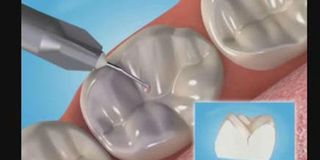Fissure sealant can save teeth from decay

What you need to know:
- It is always important for you to ask about all preventive treatments that can be provided to you and your children as these will help reduce the burden or dental diseases and the costs associated with them.
- Pit and fissure sealants are designed to specifically offer preventive effects.
A fissure sealant is a material that essentially covers the grooves or pits and fissures of teeth. Protecting deep pits and fissures reduces the chance of one getting tooth decay on the top of your teeth.
Most of the time, the teeth at the back (molars and premolars) have the most grooves.
However, the front teeth (incisors and canines) have shallow pits and fissures, and this kind of preventive treatment is not always applicable.
These deep pits and fissures are often very difficult to clean, as the bristles on your toothbrush are often not able to get to the deepest part of these grooves. If the groves are not cleaned properly, decay will start on the top of the tooth, and the tooth will sometimes need a filling.
Fissure sealants are preferred for children with decay and fillings in their baby teeth.
It is ideal for people with deep pits and fissures, those who are at risk of developing tooth decay or those with poor oral hygiene.
Why a sealant?
Pit and fissure sealants are designed to specifically offer preventive effects.
These sealants occupy the pits and fissures of teeth with a resin material and as they get filled up, the bacteria are not able to go deep into grooves, and this causes less bad bacteria to be present on the tooth.
Teeth with fissure sealants are many times less likely to develop decay than those that have not been filled.
Sealants render the pits and fissures easier to clean during brushing and chewing, as food particles do not get trapped as easily when you have deep fissures.
It is always important for you to ask about all preventive treatments that can be provided to you and your children as these will help reduce the burden or dental diseases and the costs associated with them.
The author is a dentist




